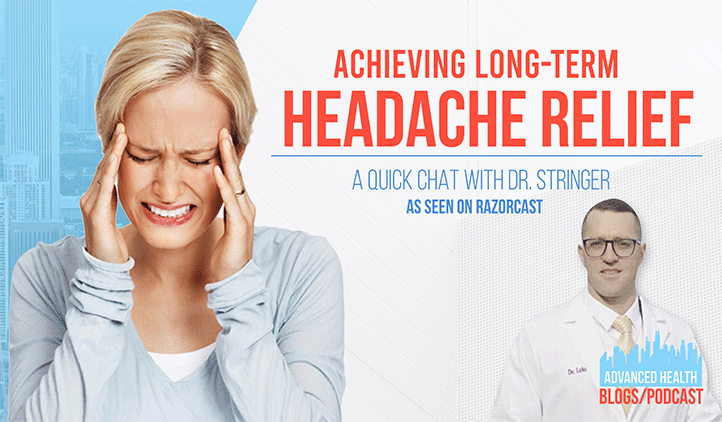We are really thorough in our approach to treating patients. So, if you are a brand-new patient, you’ll set up a new patient appointment, you’ll come in, and you’ll sit down with one of our doctors. We will do a really thorough health history and we’ll perform a spinal examination. We focus on function within the joint, which is critically important, particularly in and around how well the joint moves. And then we shoot some digital x-rays, and digital x-rays provide essentially an objective picture of what’s going on. And we also shoot a specific type of x-ray, called a motion study. It’s a biomechanical assessment of the spine. So, we can actually pinpoint the joints which essentially have shifted and aren’t moving.
From there, we can build out a treatment plan based on correcting what we found on your exam findings. And typical treatment at Advanced Health will involve three to four aspects. First of all, cervical alignment of the spine. Cervical alignment is really important, particularly when we’re working with a lot of our patients who are those corporate athletes who sit for a living. That forward head posture just shoots forward and the cervical spine straightens out and puts a massive amount of stress and tension on to the nerves, particularly in the upper part of the neck. And those are the nerves that cause the headaches.
So, through specific protocols, we practice here through a particular technique called chiropractic biophysics we could work on bringing that spine back into alignment and we can do that objectively, which offers more of a long-term solution. And again, obviously, the spine needs to move. 80% of communication with the brain comes through movement off the spine. So, you want to make sure those joints are not only in alignment, but they’re moving well, too. So, then we will go through an adjustment protocol. And there’s many different ways we can adjust the spine, if its instrument based, it’s manual based, but we’re going to focus on those upper cervicals, the top two bones in your neck. Because again, those nerve roots come out the spine, go back into your head, they innervate your eyes, your ears, nose, throat.
We also going to address that soft tissue, particularly the suboccipitals that anchor the base of your skull to the top two vertebrae in your neck. They’re put under a lot of stress and tension and over time, that tension breaks that tissue down and as it breaks down, it just gets weak and inflexible. So, we’re going to address that tissue, that weak and inflexible tissue, do some soft tissue protocols. And by doing that, you can improve the health of the tissue and improve the range of motion within the joint.
And then lastly, we’re going to supplement all of that with physical therapy and we’re going to address the imbalances. Commonly what we see within headaches, particularly those tension headaches, those postural headaches, is essentially people that have had that forward head shift and then those big muscles in your upper back and shoulders dominate with the little muscles that sit deep in front of your neck and deep between our shoulder blades are the ones that control stability within the spine.
So essentially, we’re going to activate those little muscles that have switched off, so those deep neck flexors and those muscles that sit deep between your shoulder blades. And when you combine all of those facets of treatment, that’s how we get really good results and we do awesome work with headaches in the clinic. And again, that’s what separates us from other clinics. Not that they don’t do great work, but if you’re only adjusting the spine, not addressing the alignment, or you’re only addressing the muscle imbalance, not addressing the soft tissue, you can get results.
Long-term results are going to be coming through alignment, function, health of the tissue, and then fixing those muscle imbalances. And essentially, that’s exactly what we do.

